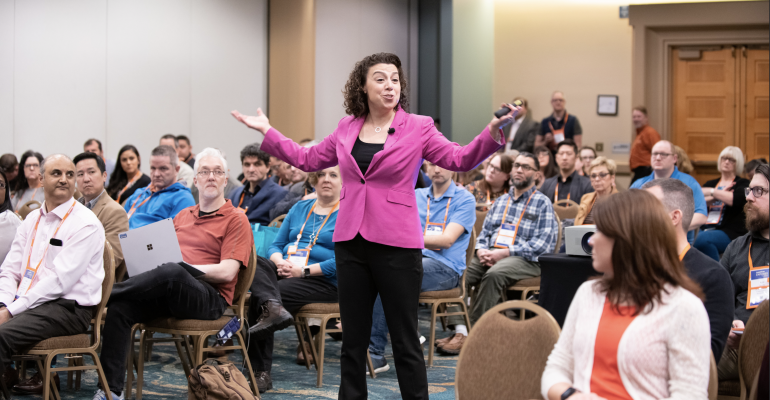The past 12 months have brought a huge jump in demand for speaker and presenter coaching, according to Kerri Garbis, founder and CEO of Ovation, a Boston-based communication-skills training firm. After all, engaging a virtual audience is quite different than engaging an in-person audience. What’s more, as in-person meetings come back, presenters may have both an in-person and virtual audience, which requires a more nuanced set of skills.
As a result, Ovation cemented a deal this month to be Meeting Professionals International’s exclusive speaker-training partner. In addition to human coaches, the firm has an AI-based diagnostic program that helps speakers understand their good and bad tendencies and make adjustments that are suggested to them based on rehearsals they record in the system.
With the ability to use remote subject-matter experts from anywhere in the world, it’s imperative that a speaker is able to present in a clear, confident, and engaging manner. In addition, “with hybrid events increasingly becoming the norm, speakers need guidance on confidently transitioning to this model,” notes Evan Casey, vice president of sales for MPI.
Here are four pieces of advice that, according to Garbis, speakers in the new meetings environment need the most.
• Strong eye contact at close range is king. “One of the most common things we see, even from seasoned speakers who know their material cold, is that they struggle to get comfortable with being in front of one lens instead of hundreds of eyes,” Garbis says. “The camera doesn’t give anything back to the speaker, and that disconnect can cause a speaker to be less confident and less effective.”
For fully virtual events, presenters must “get as close as they can to the camera and maintain eye contact for as long as possible. It has to be as if the audience is close enough to you that each attendee feels like it is a one-on-one conversation.” Session notes can be placed just under the camera lens or diagonally to the side and set on a stand so that the speaker looks down or away as infrequently as possible. For hybrid events, a knowledgeable camera operator can make the in-person speaker connect better to the remote audience through strategic close-ups.
• For hybrid audiences, presenters should “treat the camera as another section of the room that they are addressing,” says Garbis. “We don't want to ignore anybody for an extended period of time; having people feel part of the room means they're going to be more engaged and ask good questions, too. Speakers must pay as much attention to the camera as they do to each section of the in-person audience. So, you approach it as, ‘I'm going to spend a minute focusing on the right side of the room, then on the left side of the room, and then I'm going to focus on the camera section of the room.'”
• Presenters should speak at a deliberate pace, which might be uncomfortable during the first rehearsals. “You absolutely have to be aware of pace and cadence,” says Garbis. “That’s one of the metrics that our AI system will monitor as a speaker does rehearsals in the system.” Even more so than with a fully in-person audience, using a deliberate pace will boost the understanding and retention of material by the virtual audience.
• Speakers hearing themselves is the best training device. “You have to rehearse enough that the habits you want to display are in your muscle memory,” Garbis notes. “Even for pre-recorded presentations, it has to get where you're not thinking about, ‘How’s my cadence? How’s my breathing? Am I using filler words when I pause? Am I staying on time?’ Presenters have to practice out loud at least a few times to feel confident even if they stumble momentarily, and to maintain their focus on the material rather than on how they sound.”





